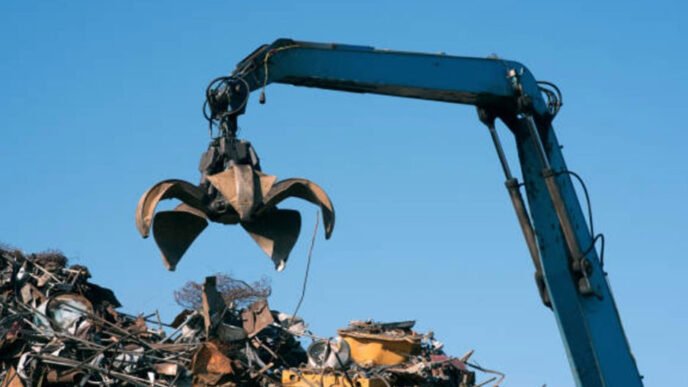Renting out your home can be a great way to generate extra income, but it requires careful preparation to ensure you attract quality tenants and avoid potential issues. This comprehensive guide will walk you through the essential steps to prepare your home for renting, from making necessary repairs to setting the right rental price. By following these steps, you can create a welcoming and safe environment for your tenants, while also protecting your investment. Whether you’re a first-time landlord or have experience in property management, these tips will help you get your home ready for the rental market.
1. Assess and Make Necessary Repairs
Before you put your home up for rent, it’s important to assess its current condition and make any necessary repairs. Start with a thorough inspection of the property, both inside and out. Look for any issues that could pose a safety hazard or inconvenience to your tenants, such as leaky faucets, broken windows, or faulty electrical outlets. Addressing these problems before renting can prevent bigger issues down the line and ensure your home is in top condition. Additionally, consider updating any outdated fixtures or appliances to make your property more appealing to potential tenants.
2. Screen Potential Tenants Thoroughly
Finding the right tenants is crucial for a successful rental experience. Start by advertising your property effectively and collecting applications from interested renters. Conduct background checks to verify their identity, rental history, and creditworthiness. Contact previous landlords to get an idea of their behavior as tenants and their ability to pay rent on time. It’s also important to check their employment status and income to ensure they can afford the rent. Knowing how to screen tenants effectively can help you avoid potential problems and find reliable renters who will take good care of your property.
3. Enhance Curb Appeal
First impressions are crucial, and the exterior of your home is the first thing potential tenants will notice. Enhancing your home’s curb appeal can generate more interest and set a positive tone for viewings. Start by cleaning up the yard, mowing the lawn, trimming the bushes, and removing weeds. Adding flowers or potted plants can bring a splash of color and warmth. Make sure the driveway and walkways are clean and in good condition. A fresh coat of paint on the front door or updated hardware can also make a significant difference. These small improvements can create an inviting exterior that attracts potential tenants.
4. Stage Your Home for Showings
Staging your home can make a big difference in how potential tenants perceive the space. Start by arranging furniture to highlight the flow and functionality of each room. Use neutral colors and décor to appeal to a wide range of tastes. Ensure each room is well-lit by opening curtains and blinds and using adequate lighting. Add some finishing touches, such as fresh flowers or a bowl of fruit, to make the space feel welcoming. Remember to highlight any unique features of your home, such as a fireplace or a spacious deck, to make it stand out. Effective staging can help potential tenants visualize themselves living in the home, increasing the likelihood of a successful rental.
5. Create a Detailed Lease Agreement
A well-crafted lease agreement is essential for setting clear expectations and protecting both you and your tenants. This document should outline all terms and conditions, including the rental price, payment due dates, security deposit details, and maintenance responsibilities. Specify policies regarding pets, smoking, and any other rules you want to enforce. Make sure to include procedures for handling repairs and emergencies. Having a detailed lease agreement helps prevent misunderstandings and provides a legal framework to resolve any issues that may arise during the tenancy. Consider consulting a legal professional to ensure your lease complies with local laws and regulations.
6. Conduct a Thorough Move-In Inspection
Before your tenants move in, conduct a thorough inspection of the property and document its condition. Use a checklist to note the state of each room, including walls, floors, appliances, and fixtures. Take photographs or videos as additional evidence. Have the tenant sign off on the inspection report to acknowledge the property’s condition at the start of their tenancy. This step is crucial for avoiding disputes over security deposits when the lease ends. A move-in inspection ensures both parties are aware of the property’s condition and can agree on any existing issues that need attention.
7. Set Up a System for Maintenance and Repairs
Effective property maintenance is key to keeping your tenants satisfied and your property in good condition. Set up a system for handling maintenance requests promptly. Provide tenants with a clear process for reporting issues and ensure you have reliable contractors or handymen to address repairs. Regularly schedule preventive maintenance tasks, such as HVAC servicing and gutter cleaning, to avoid bigger problems down the line. By staying on top of maintenance, you can create a positive living environment for your tenants and protect your investment from damage and deterioration.
8. Implement Efficient Rent Collection Methods
An efficient rent collection system ensures you receive payments on time and reduces the risk of late payments. Offer multiple payment options, such as online transfers, direct deposits, and mobile payment apps, to make it convenient for tenants. Set clear policies for late fees and communicate them upfront. Consider using property management software to automate rent reminders and track payments. Providing an easy and transparent rent collection process helps maintain a smooth landlord-tenant relationship and ensures a steady cash flow.
Conclusion
Preparing your home for renting involves a series of important steps to ensure you attract quality tenants and maintain a successful rental experience. From making necessary repairs and enhancing curb appeal to thoroughly screening tenants and setting up efficient systems for maintenance and rent collection, each step plays a vital role in the process. By following this comprehensive guide, you can create a safe, appealing, and well-managed rental property that meets the needs of your tenants and maximizes your investment. Taking the time to prepare properly will help you avoid potential issues and enjoy the benefits of being a successful landlord.













